23 Wild Animals in Indiana [Wildlife in Indiana]
Want to know more about the wildlife in Indiana in the US?
Discover 23 wild animals in Indiana in this post, as well as interesting facts about them. 🇺🇸
TABLE OF CONTENTS [show]
Learn All About Hoosier Animals
Ready to learn all about Hoosier animals?
I’ve always been fascinated by animals, and by how they can be so different from one country to another. In this guide, we’ll focus on the many animals Indiana has on the land, in the sky, and underwater.
I’ve split the guide into 5 categories:
- Native animals from Indiana
- Endangered animals of Indiana
- What is the state animal for Indiana?
- How many animals native to Indiana?
- What animals are found only in Indiana?
Let’s dive in right away with our first category!
Native Animals from Indiana
Indiana is a state of the United States located in the midwestern part of the country. It gets its name from the many native tribes that remained even after it was granted statehood, has been home to indigenous peoples for thousands of years, has several metropolitan areas of more than 100,000 inhabitants, and joined the United States in 1816.
It is bordered by Michigan, Ohio, Kentucky, and Illinois, and its capital and largest city is Indianapolis, which counts more than 887,000 inhabitants (but more than 2,111,000 if you include the metropolitan area).
An interesting part of the state that I wanted to tackle is its wildlife. In light of that, I have listed the best of it, and I hope you will love learning what animals live in Indiana.
Here’s the Indiana animals list.
1. Allegheny woodrat
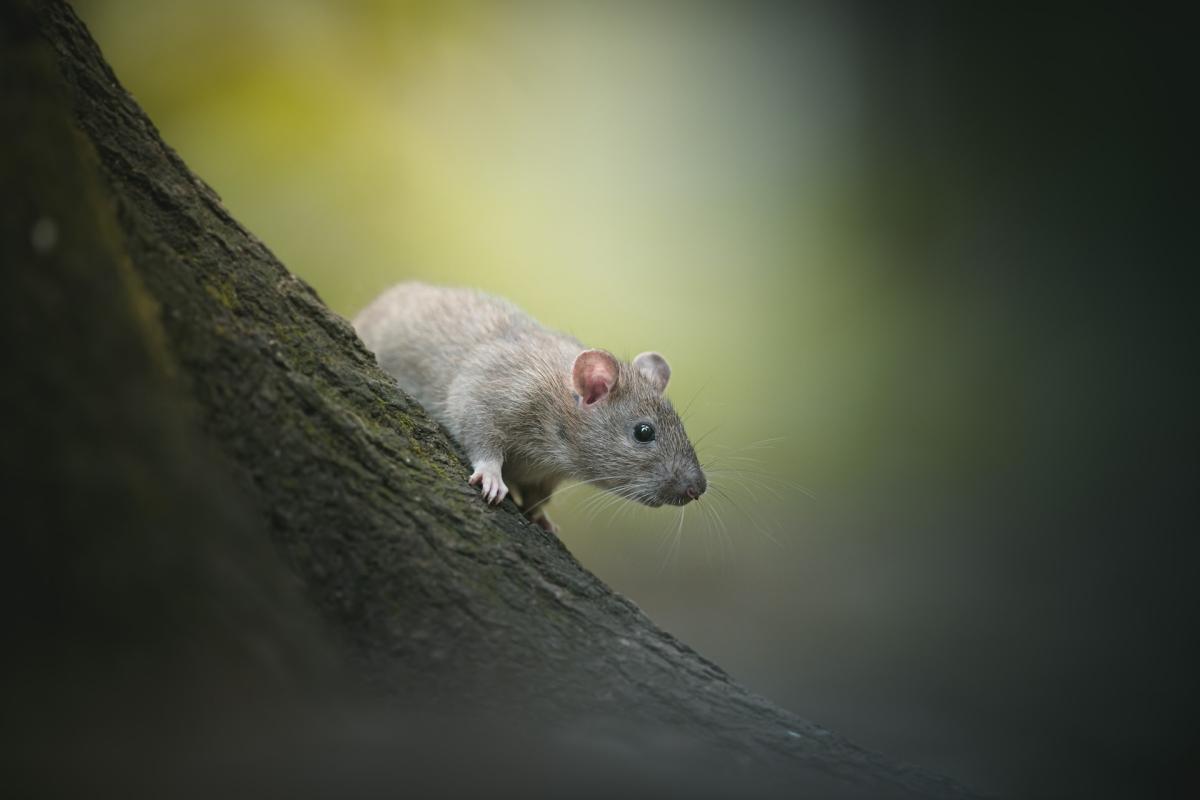
- Name: Allegheny woodrat
- Scientific name: Neotoma magister
- Conservation status:
The Allegheny woodrat is a medium-sized species of rodent native to the northeastern United States. It has long, soft fur with unusually long whiskers, more than 5 cm / 2 in in length.
This rat inhabits rocky outcrops in Indiana, such as caves, slopes, cliffs, and mines. After having disappeared from the state, it was successfully reintroduced to its southern portion; it is now closely monitored by federal authorities.
2. Muskrat
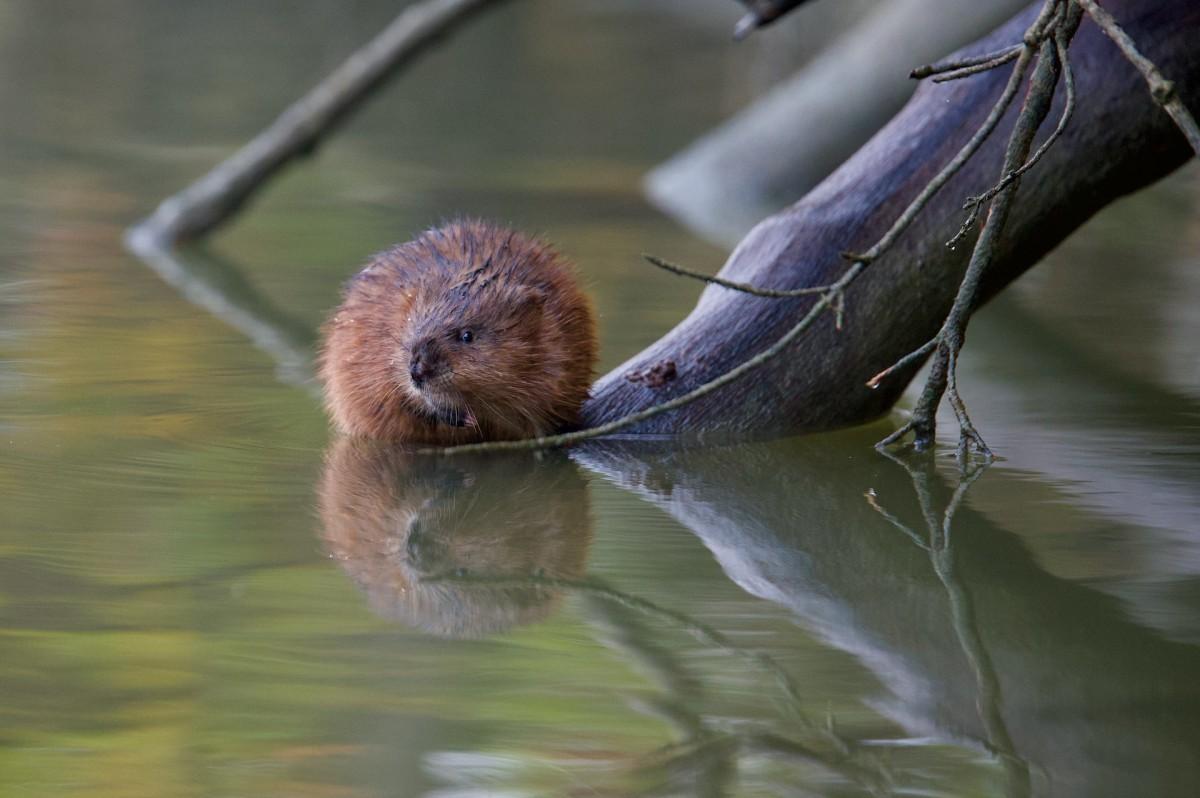
- Name: Muskrat
- Scientific name: Ondatra zibethicus
- Conservation status:
The muskrat is a medium-sized species of rodent native to North America. It has been introduced to much of Eurasia, and can now be found throughout most of the Northern Hemisphere. It is an important resource for food and fur and is pretty impactful on its local range, usually wetlands.
This rodent lives in family groups, and it is particularly important to Native Americans: some peoples predict winter snowfall levels by observing the timing and size and muskrat lodge construction!
3. Coyote
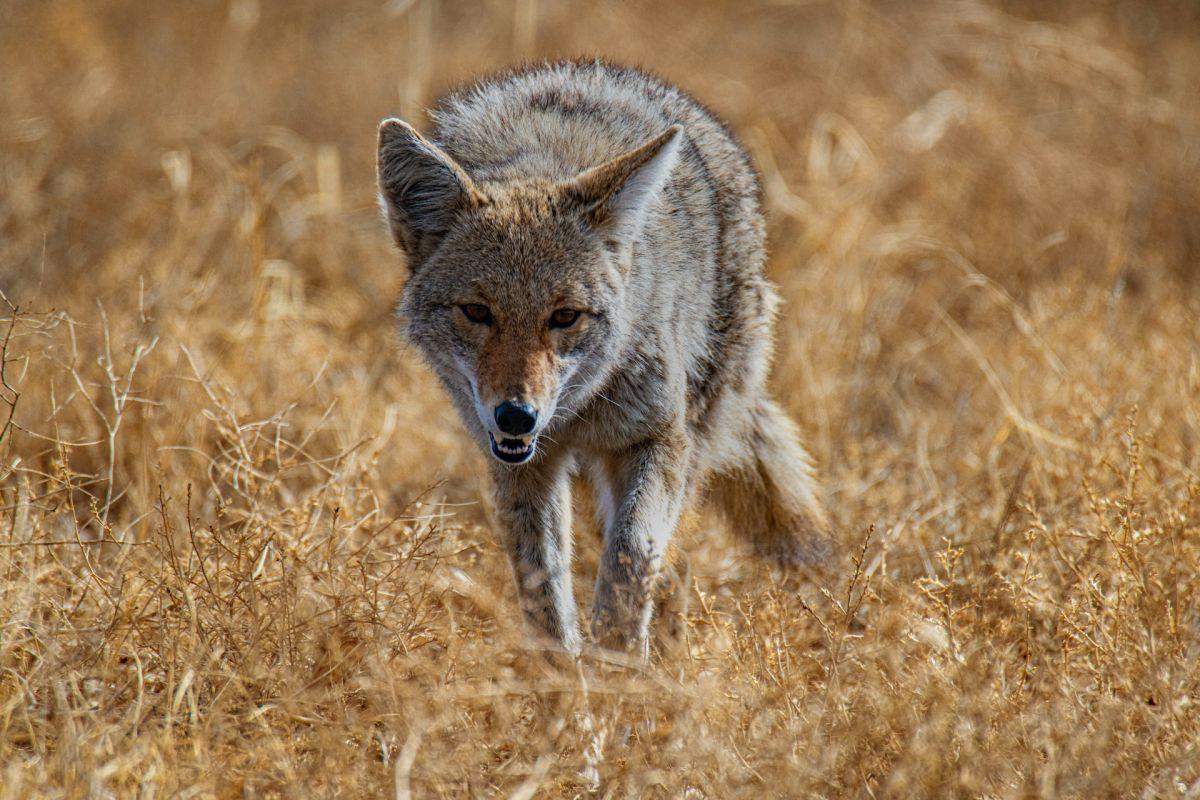
- Name: Coyote
- Scientific name: Canis latrans
- Conservation status:
The coyote is a very common and widespread species of canine endemic to North America; it can be found throughout the entirety of the continent and is well-known by Americans. Although considered of least concern, its biggest threat is humans: it is often persecuted and suffers from habitat loss, but is so adaptable that it can easily thrive in human-disturbed areas.
The natural predators of the coyote are gray wolves and cougars, although there are no pumas in Indiana.
4. Gray wolf
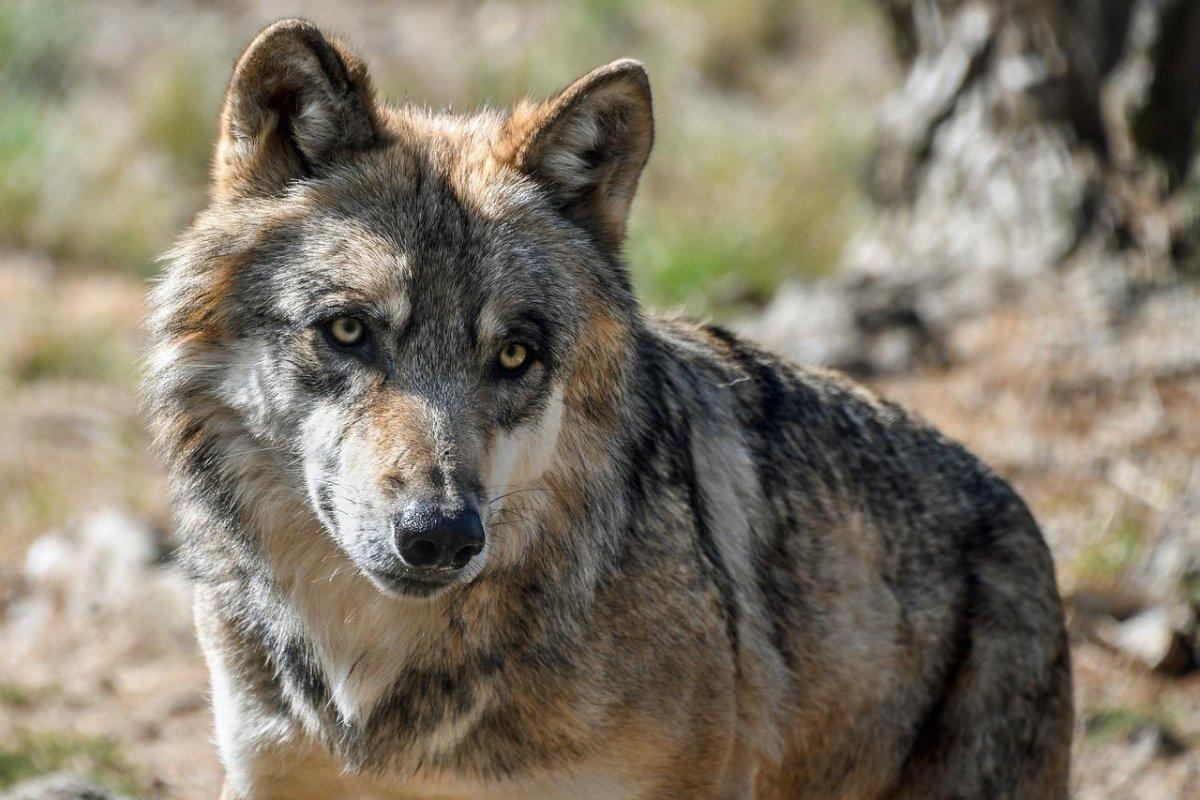
- Name: Gray wolf
- Scientific name: Canis lupus
- Conservation status:
The gray wolf is the largest canine in the world, and one of the most widespread of the canids, being found throughout most of the Northern Hemisphere in various forms, from the sandy deserts of the Arabian Peninsula to the icy wastelands of Greenland, Canada, and Siberia. There are about 300,000 individuals in the world.
In Indiana, you will find this territorial mammal in a family group. It is an organized pack hunter that mainly feeds on ungulates, but also attacks coyotes.
5. White-tailed deer
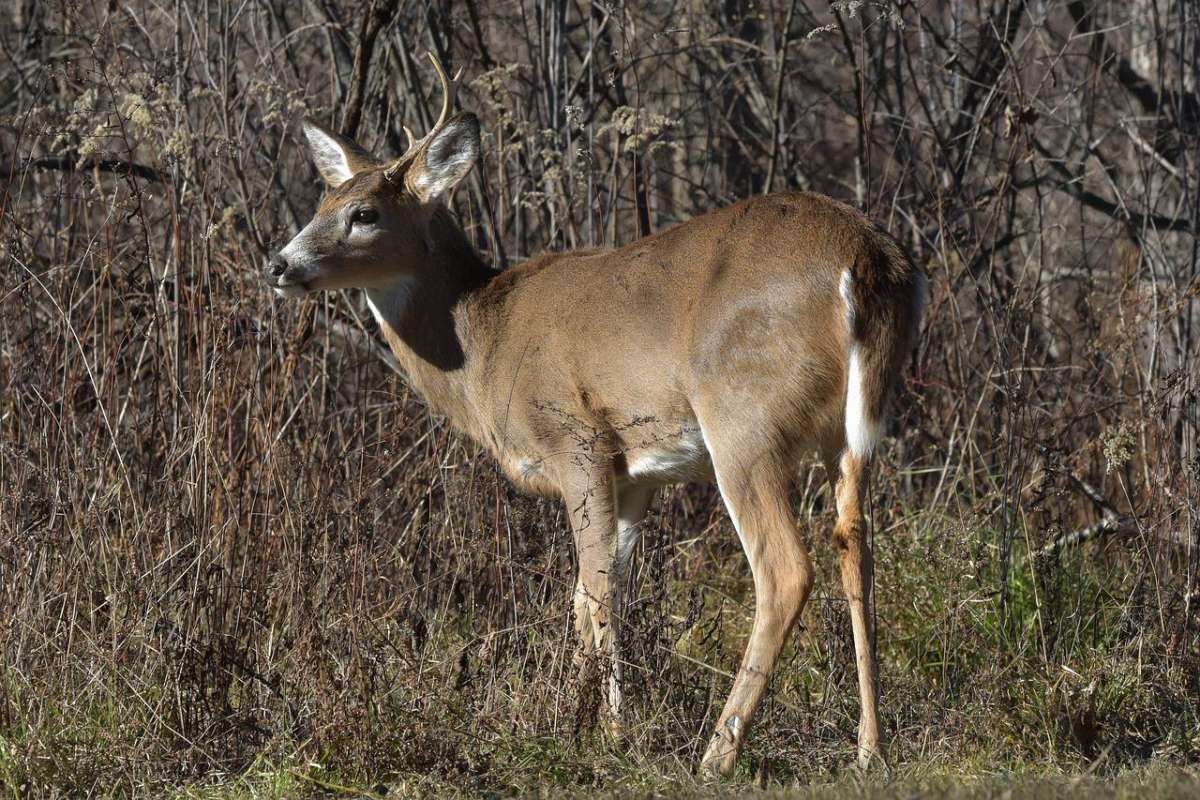
- Name: White-tailed deer
- Scientific name: Odocoileus virginianus
- Conservation status:
The white-tailed deer is an ideal target for the gray wolf. Also known as the Virginia deer or simply as the whitetail, it is a very widespread and common mammal in the United States and is the emblem of multitudes of states.
Indiana is home to a high white-tailed deer density, although its largest population is located in Texas, with more than 5.3 million members in the state alone!
6. American black bear
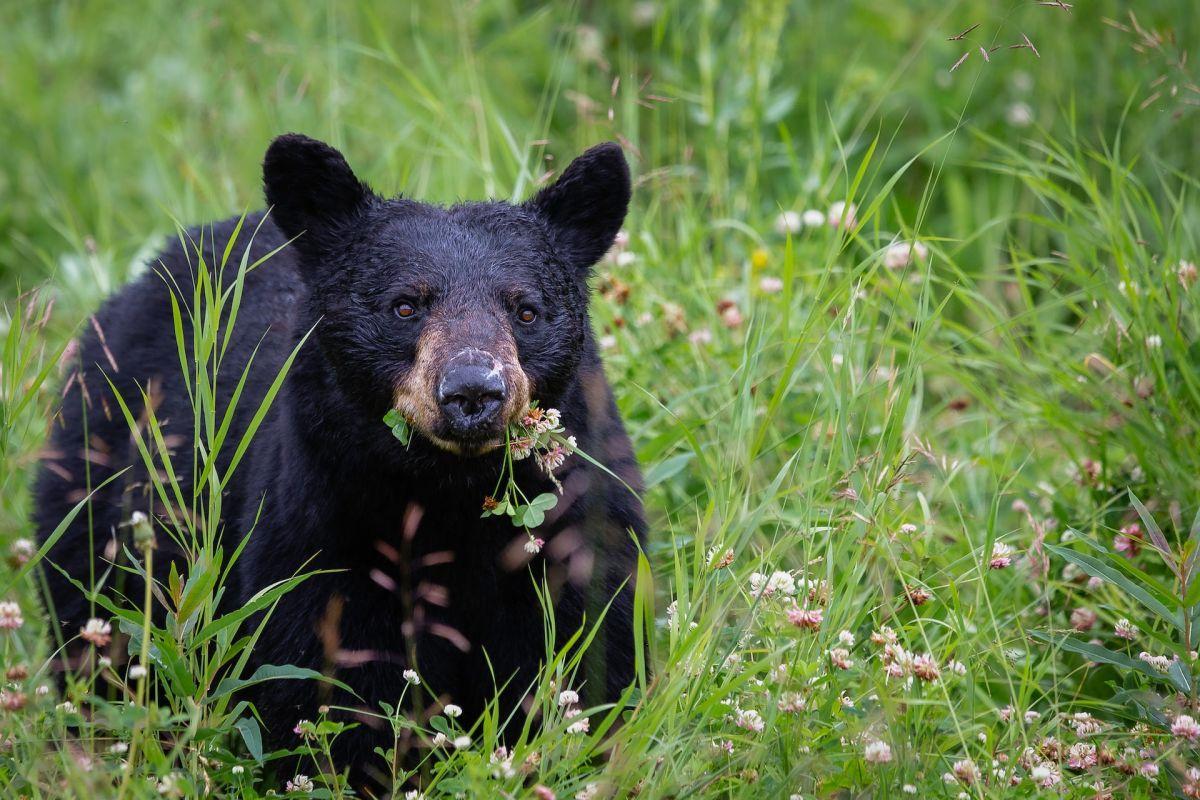
- Name: American black bear
- Scientific name: Ursus americanus
- Conservation status:
The American black bear is the smallest and most common and widespread species of bear native to North America. Although its range is much larger than it used to be, it can still be found across much of Canada, as well as in the eastern and western United States, and recent sightings confirmed it is present in southern Indiana.
This bear particularly likes areas with inaccessible terrain, thick vegetation, and large quantities of food.
7. Groundhog
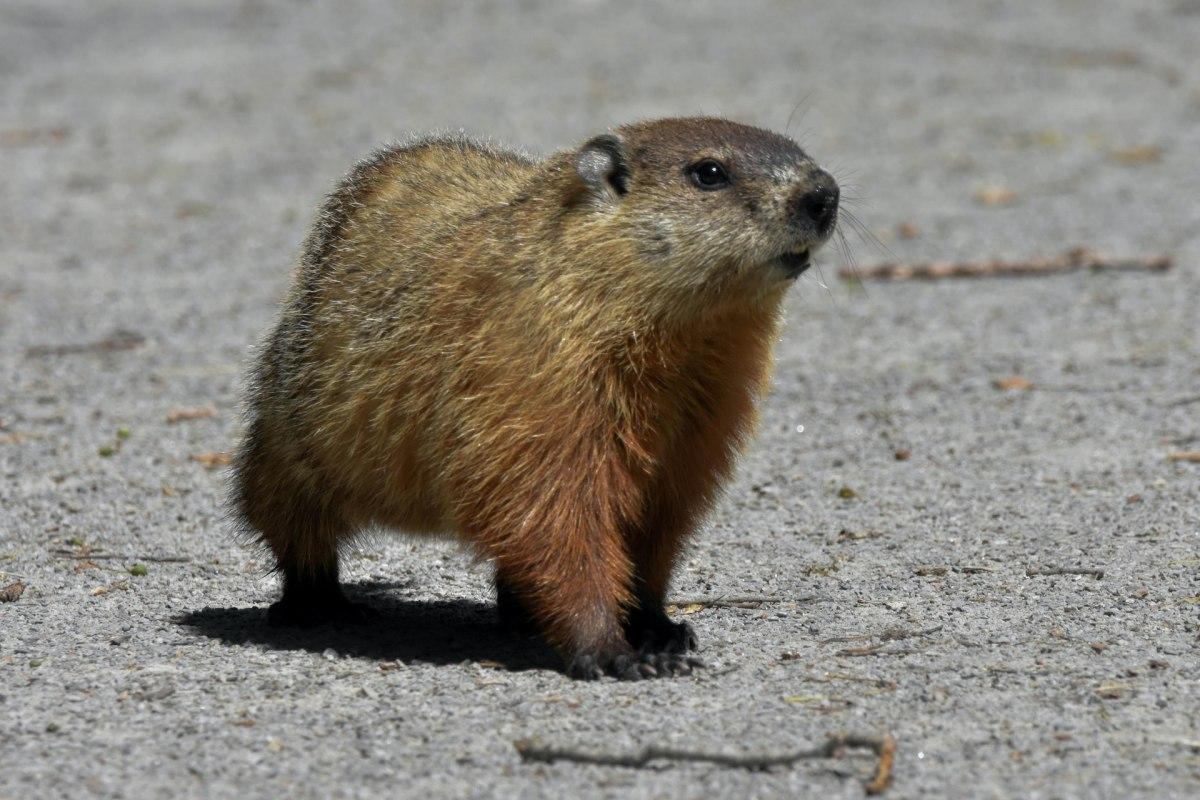
- Name: Groundhog
- Scientific name: Marmota monax
- Conservation status:
The groundhog, also known as the red monk, the land beaver, the woodchuck, or the whistlepig, is a large species of ground squirrel native to the eastern United States, across Canada, and into Alaska. It is the most solitary of all marmot species, although it lives in aggregations.
This rodent builds itself a separate, warm burrow during the winter, in which it enters true hibernation throughout the coldest months of the year.
8. Bald eagle
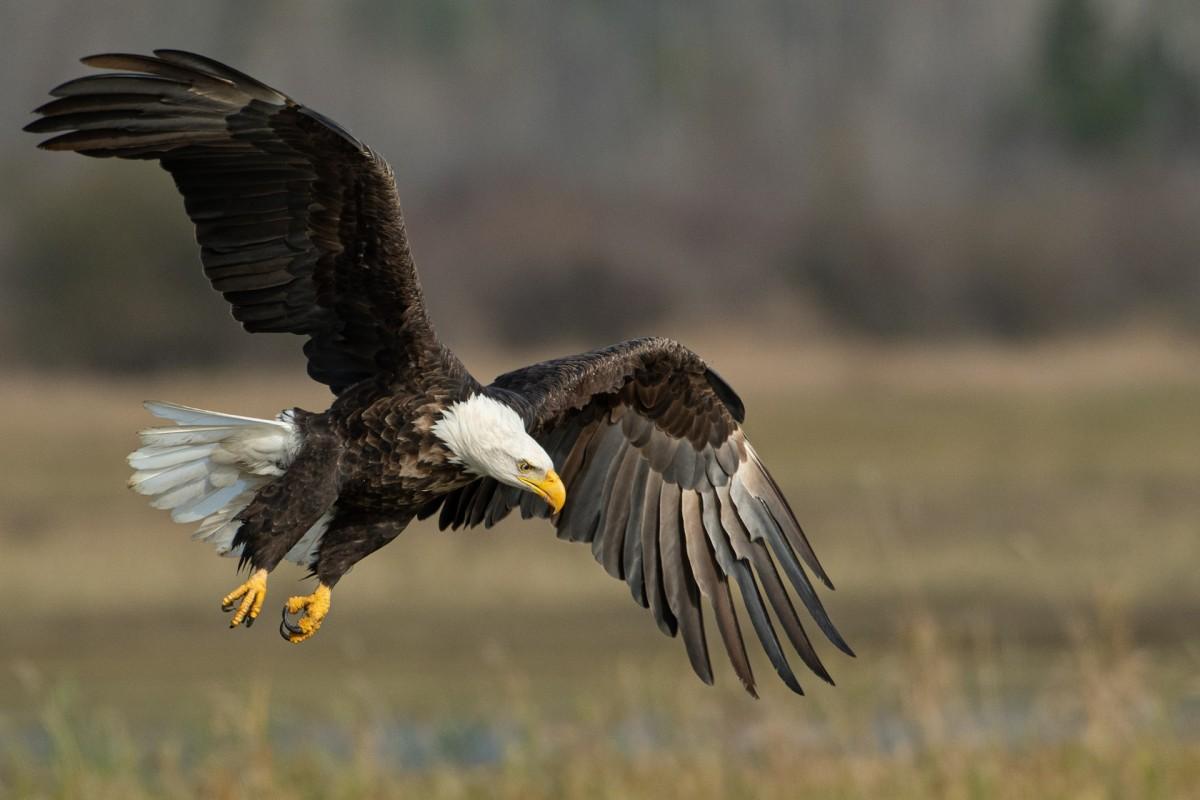
- Name: Bald eagle
- Scientific name: Haliaeetus leucocephalus
- Conservation status:
The bald eagle is the national bird of the United States and one of its strongest symbols. It is also one of the largest eagles in the world, and it is a sea eagle that primarily feeds on fish. It is well-known for its nests, the largest tree nests ever recorded, sometimes weighing as much as 1 ton / 1.1 short ton and being 2.5 m / 8.2 ft wide!
This eagle is not actually bald, but it has a white head instead; it is renowned for its beautiful flight, as well as its well-proportioned, beautiful appearance.
9. Plains leopard frog
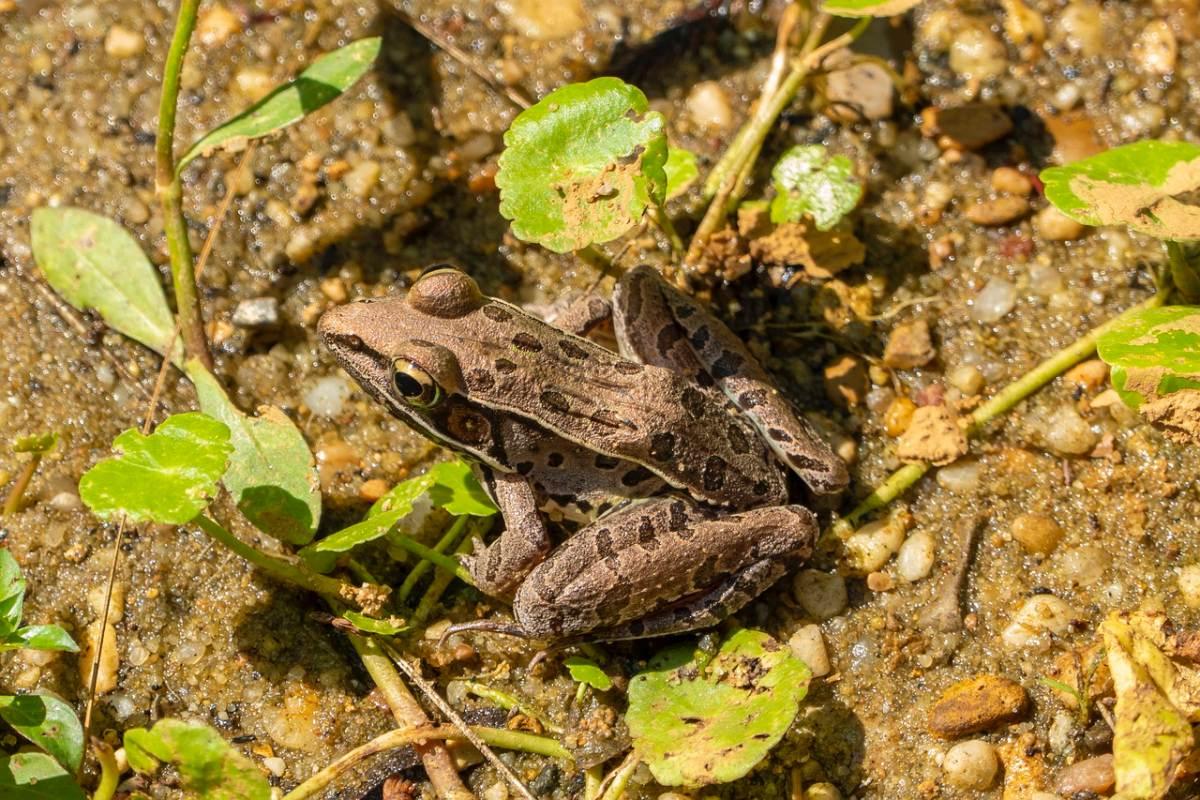
- Name: Plains leopard frog
- Scientific name: Lithobates blairi
- Conservation status:
The Plains leopard frog, also known as Blair’s leopard frog, is a species of spotted frog native to North America. It is found throughout the Great Plains of the continent, from Indiana in the east to New Mexico and Texas in the west.
This frog is fairly common within its range, and it is globally listed as least concern; however, in Indiana, it is seriously endangered by the use of fertilizers and pesticides in farms near its aquatic habitat.
10. Massasauga
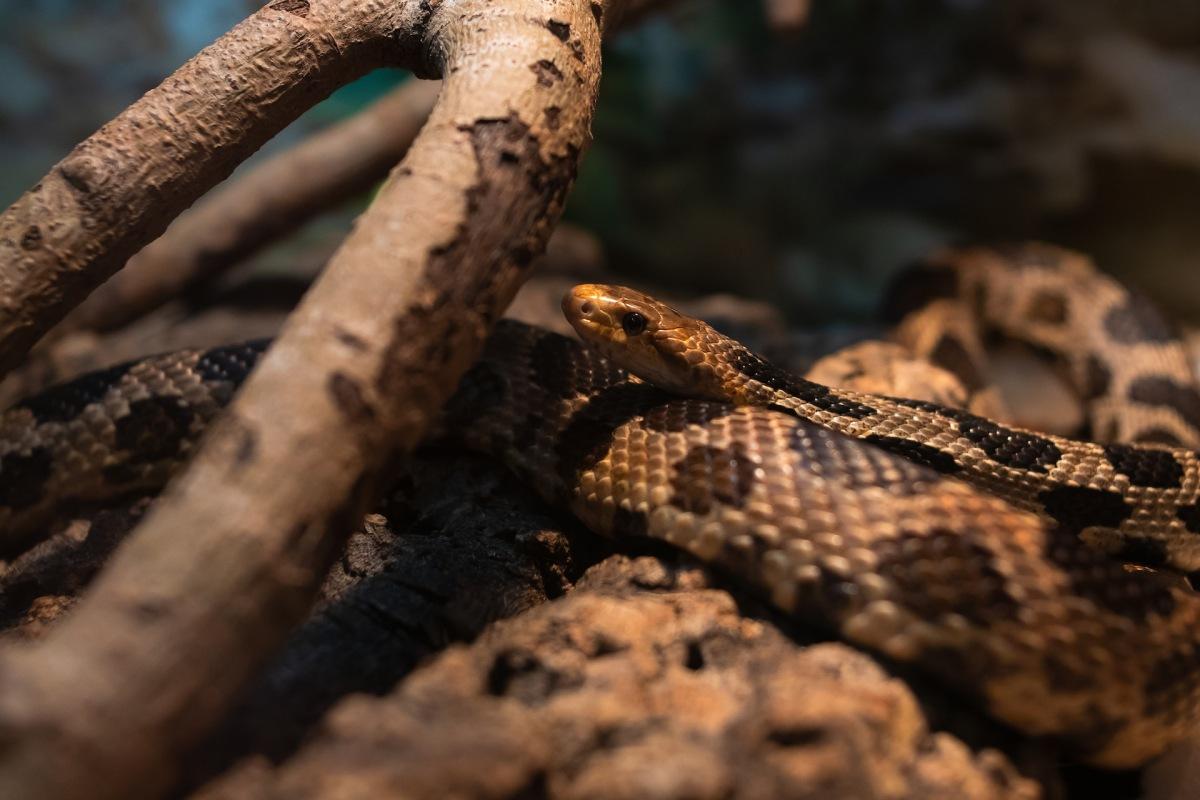
- Name: Massasauga
- Scientific name: Sistrurus catenatus
- Conservation status:
The massasauga is a species of rattlesnake native to midwestern North America, from Mexico to Lake Michigan. Similarly to other rattlesnakes and pit vipers, it is venomous, and its venom prevents blood clotting, which means its victims rapidly die from severe internal bleeding.
This rattlesnake is not very dangerous, however, as it usually avoids humans when possible, and is quite shy. It mainly feeds on small vertebrates such as mammals, lizards, and other snakes.
11. Alligator snapping turtle
- Name: Alligator snapping turtle
- Scientific name: Macrochelys temminckii
- Conservation status:
The alligator snapping turtle is definitely one of the scariest and most impressive animals you could encounter in Indiana. Although a turtle and relatively slow, it has jaws powerful enough to crush bones and cut off fingers, and absolutely needs to be handled properly.
This turtle was named after its resemblance with the alligator, and it is the largest freshwater turtle in all of North America. It is found in southern Indiana.
12. Whooping crane
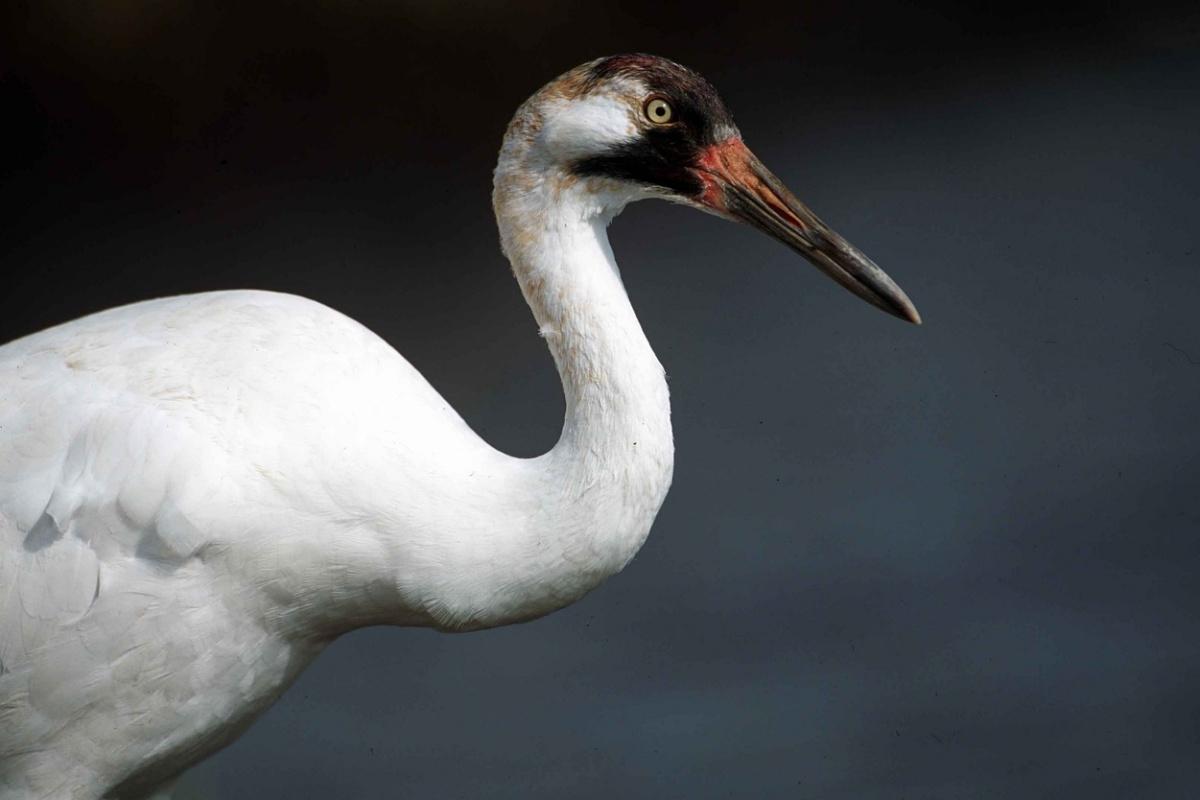
- Name: Whooping crane
- Scientific name: Grus americana
- Conservation status:
The whooping crane is the tallest North American bird, and is one of two species of cranes found on the continent, alongside the sandhill crane.
It is named after its whooping sound, and is endangered due to habitat loss and unregulated hunting, which led to the survival of only 21 individuals in 1941; since then, it has slightly recovered, and there are now more than 800 of these birds in the world.
13. Barn owl
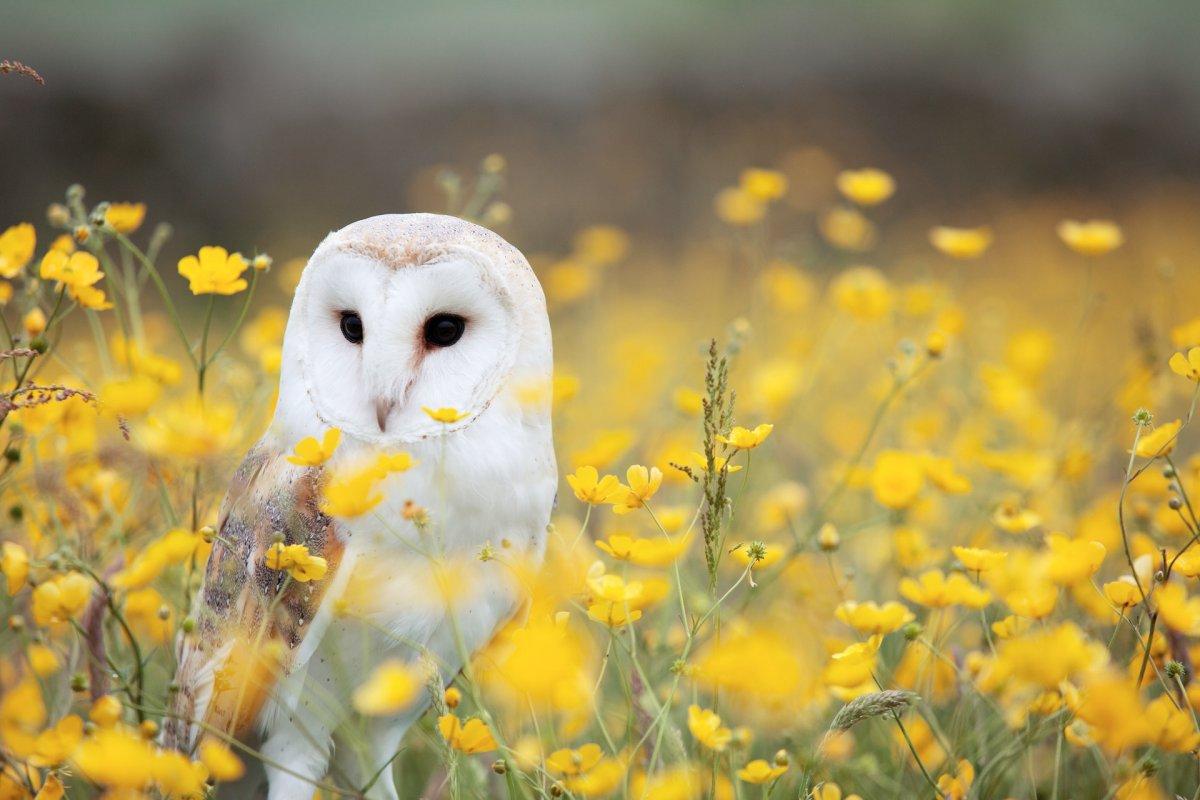
- Name: Barn owl
- Scientific name: Tyto alba
- Conservation status:
The barn owl, also known as the common barn owl, is the most widespread and common species of owl in the world, and it is thus classified as least concern on a global scale; in Indiana however, as well as in other Midwestern states, it is listed as endangered.
This owl is characterized by its white facial disc. Although it is nocturnal over most of its range, it can be active by day in heavily disturbed areas.
14. Peregrine falcon
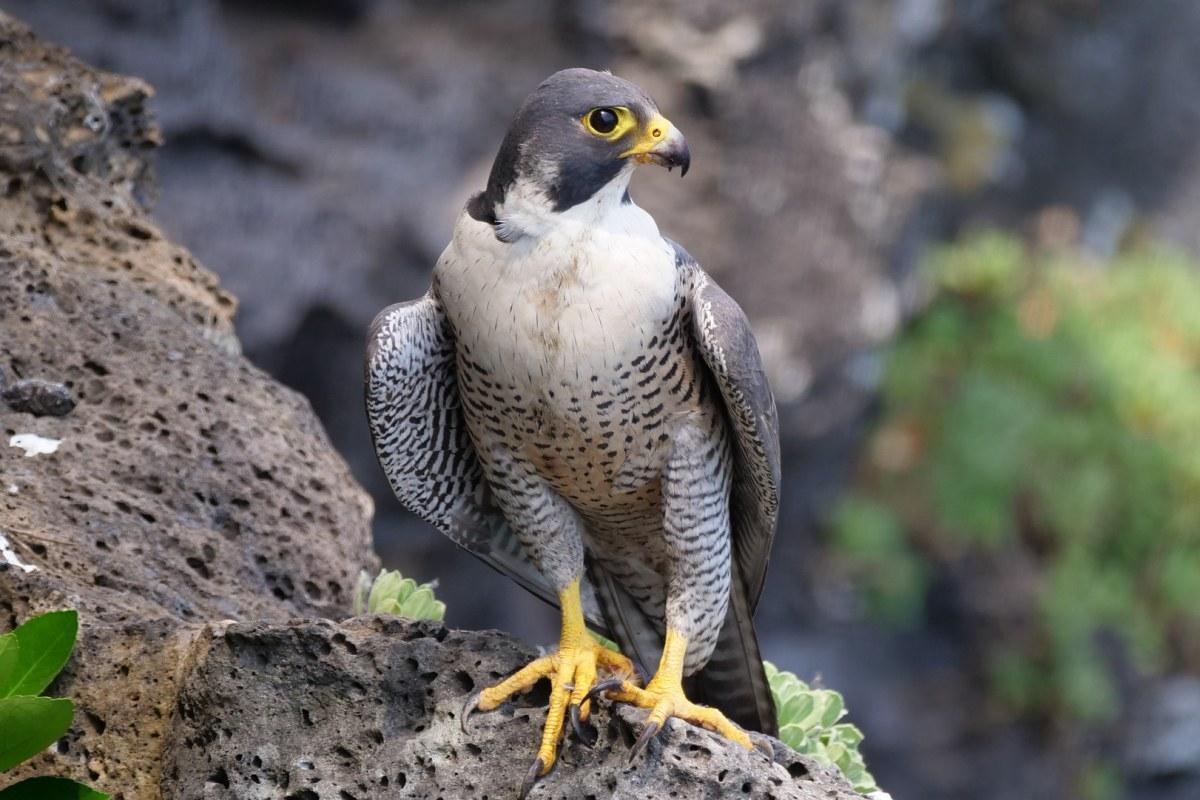
- Name: Peregrine falcon
- Scientific name: Falco peregrinus
- Conservation status:
Most people immediately think of the cheetah as the fastest animal on Earth… but that is only true on land. The peregrine falcon, when diving, is by far the fastest member of the animal kingdom, reaching outstanding speeds of up to 389 km/h / 242 mph!
This raptor is very common and can be found all around the planet. When it comes to feeding, it usually preys on medium-sized birds, but depending on the area, it can also feed on small mammals, reptiles, or insects.
15. Nine-banded armadillo
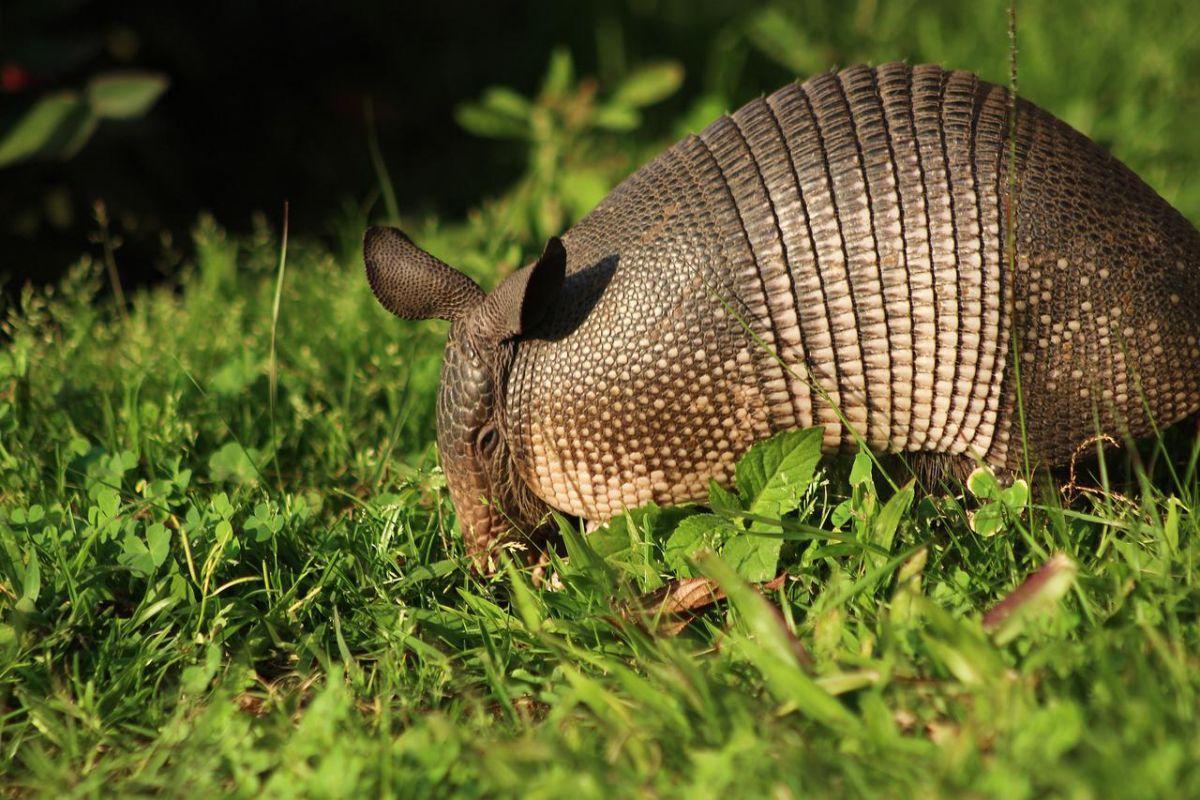
- Name: Nine-banded armadillo
- Scientific name: Dasypus novemcinctus
- Conservation status:
The nine-banded armadillo, also known as the nine-banded long-nosed armadillo or the common long-nosed armadillo, is the most widespread species of armadillo, being found in South, Central, and North America. Indiana forms the northernmost part of its range, and it can be seen in the southern portion of the state.
It is an insectivore that primarily feeds on termites and ants, and is often killed by traffic accidents.
16. Fox squirrel
- Name: Fox squirrel
- Scientific name: Sciurus niger
- Conservation status:
The fox squirrel, also known as Bryant’s fox squirrel or the eastern fox squirrel, is the largest species of tree squirrel native to North America. It is often confused with the American red squirrel or the eastern gray squirrel, although it has a different size and coloration.
This squirrel is abundant in Indiana’s open forest stands, with little understory vegetation. It feeds on tree buds, insects, tubers, roots, and bird eggs, and is over-hunted in Indiana, Michigan, and Ohio.
17. Eastern cottontail
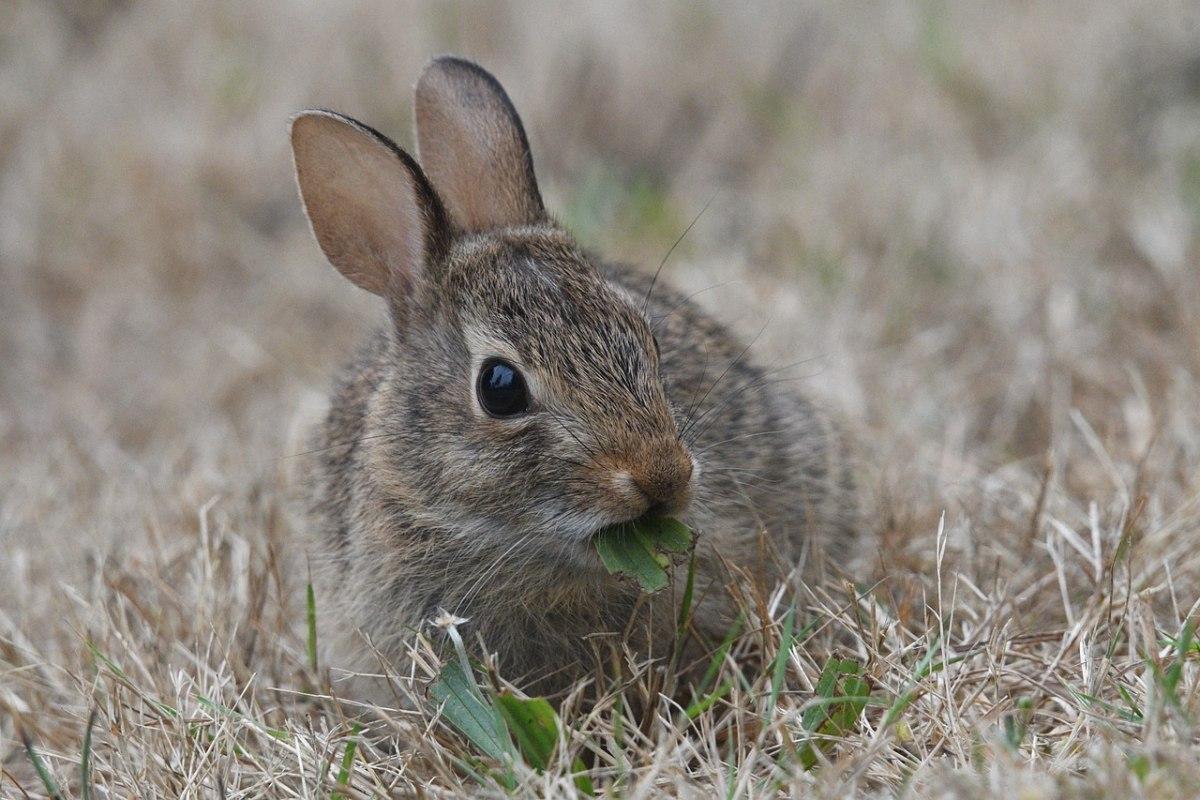
- Name: Eastern cottontail
- Scientific name: Sylvilagus floridanus
- Conservation status:
The eastern cottontail is a species of New World cottontail rabbit native to the eastern United States, Central America, and the northwestern tip of South America. It is the most common rabbit species in North America and is a major prey item for bobcats.
This rabbit lives in Indiana’s meadows and shrubby areas, as well as clearings and old fields; it requires a dense cover to avoid predators.
18. Bobcat
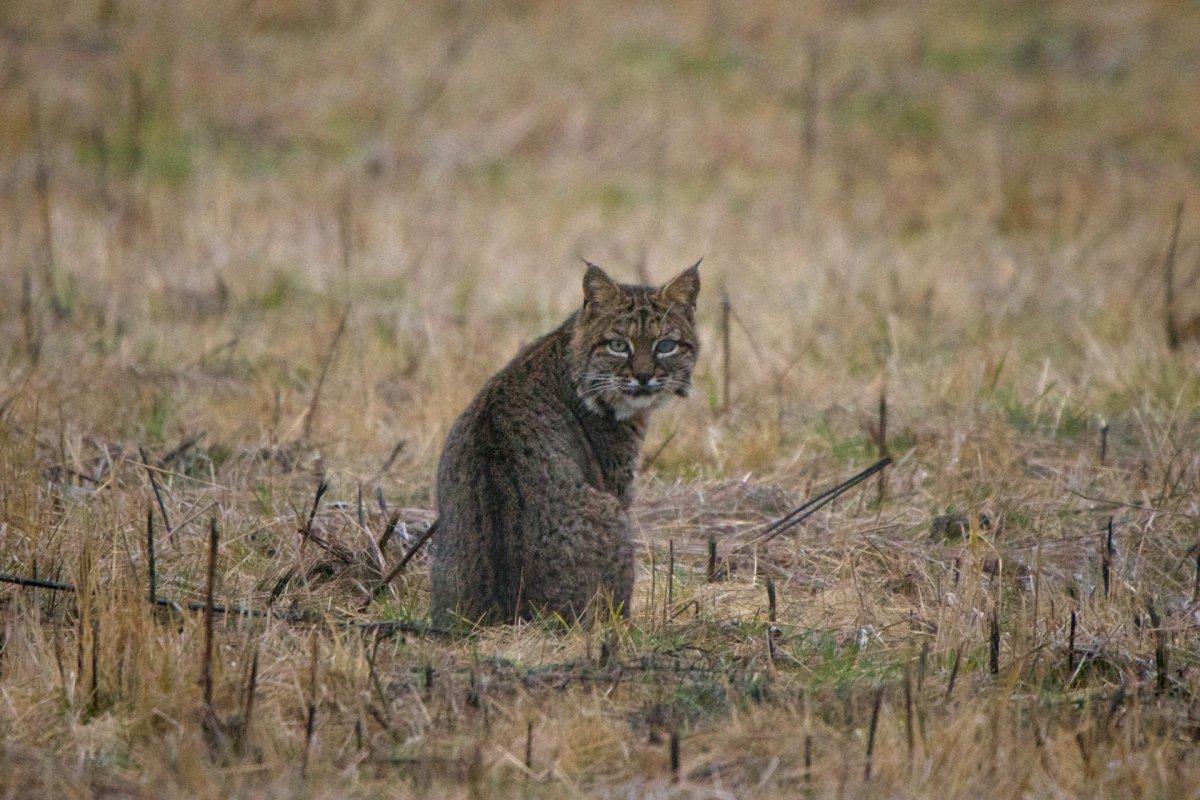
- Name: Bobcat
- Scientific name: Lynx rufus
- Conservation status:
The bobcat, also known as the red lynx, is a medium-sized species of cat native to North America. Since 2002, it has been considered of least concern, since it is very widely distributed and fairly common within its range; in Indiana, Ohio, and New Jersey, it is locally classified as endangered.
Contrary to its European counterpart, the Eurasian lynx, the bobcat is not scared of humans, and can often be seen in urban surroundings.
19. Eastern mole
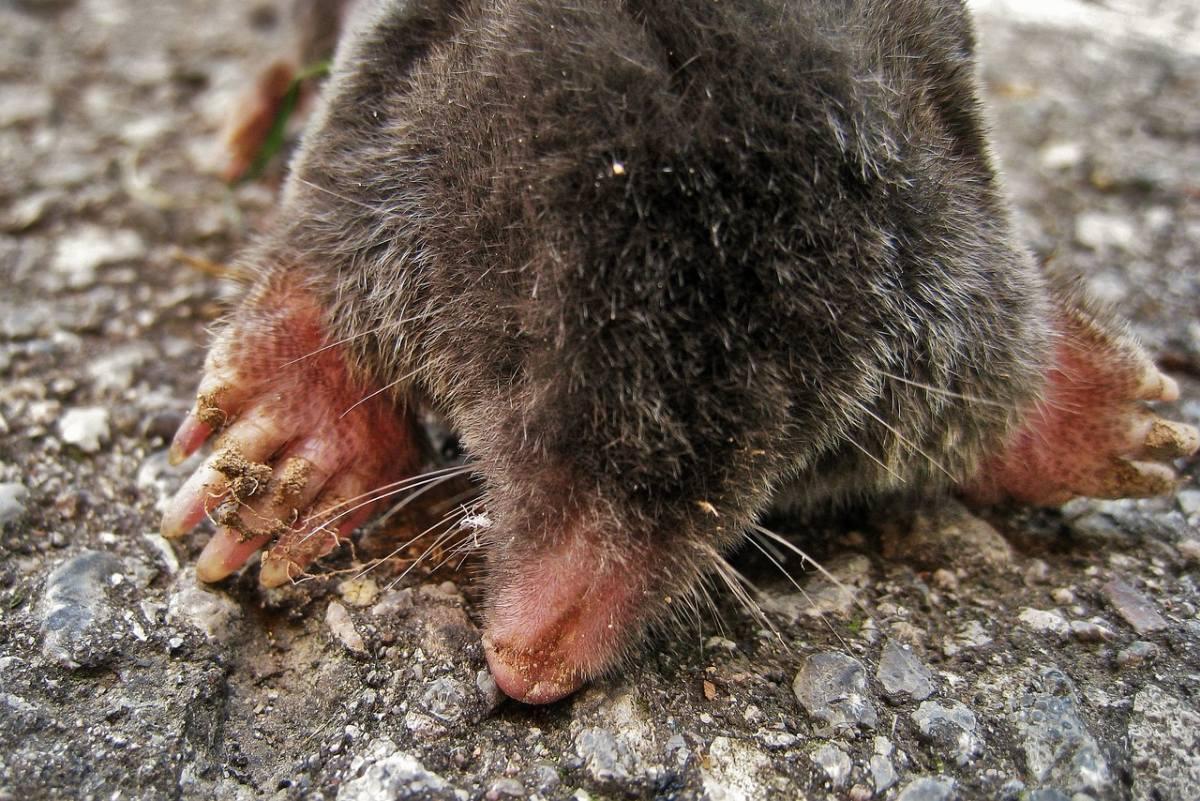
- Name: Eastern mole
- Scientific name: Scalopus aquaticus
- Conservation status:
The eastern mole, also known as the common mole, is a medium-sized species of mole native to the eastern half of the United States. It can usually be found in the loamy soils of pastures, fields, and thin woods, where it builds deep and shallow burrows, which are easily seen thanks to the characteristic molehills on the surface.
The natural predators of the eastern mole are dogs, foxes, coyotes, and cats.
20. Northern cardinal
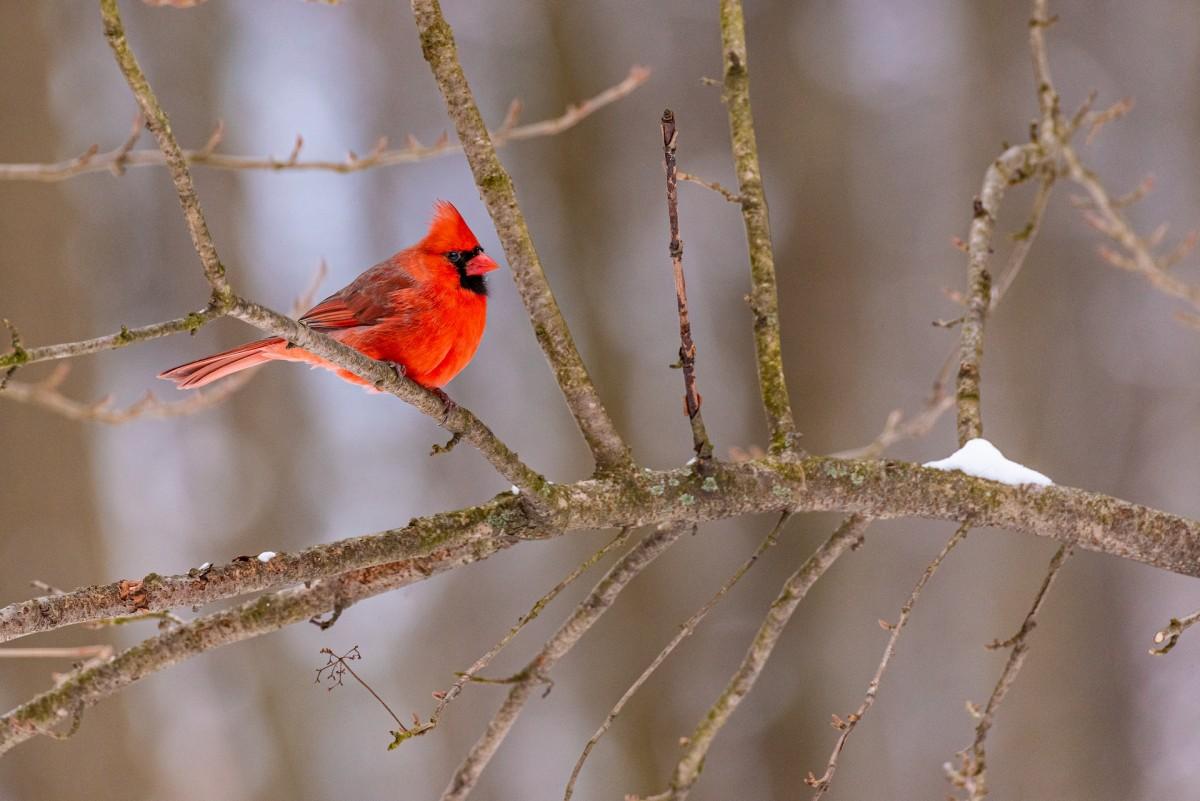
- Name: Northern cardinal
- Scientific name: Cardinalis cardinalis
- Conservation status:
The northern cardinal, also known as the redbird, the red cardinal, or simply the cardinal, is the state bird of Indiana (as well as that of 6 other states). It is characterized by the plumage of males, which is vibrant red, while females are reddish olive.
The range of the northern cardinal goes from southern Mexico to the northeastern United States, and it is very common in Indiana.
21. Ruffed grouse
- Name: Ruffed grouse
- Scientific name: Bonasa umbellus
- Conservation status:
The ruffed grouse is a medium-sized species of grouse native to the northern United States, Canada, and Alaska. It is a resident bird that does not migrate and is often incorrectly called the partridge within its range.
This grouse spends most of its time on the ground, looking for buds, seeds, insects, berries, and leaves. Hunting of the ruffed grouse is common in parts of its range.
22. Indiana bat
- Name: Indiana bat
- Scientific name: Myotis sodalis
- Conservation status:
The Indiana bat is a medium-sized species of bat native to much of the central and eastern United States: despite its name, it is not endemic to Indiana but actually has a very wide range.
This bat inhabits hardwood forests and is common around crop fields, grasslands, and agricultural land, where it feeds on flying insects such as mosquitoes, midges, beetles, and moths. Over the past 10 years, more than 50 percent of its population disappeared due to the rapid spread of the white-nose syndrome.
23. American badger
- Name: American badger
- Scientific name: Taxidea taxus
- Conservation status:
The American badger, often simply known as the badger within its range, is a species of badger similar to that of Europe, although not closely related. It can be found throughout most of the United States, as well as northern Mexico and southern Canada, and inhabits the open grasslands of Indiana, where there is enough food supply (mainly mice, groundhogs, and squirrels).
This mustelid is nocturnal and spends most of its time buried in the ground.
—
So there you have them, these were my 23 Indiana wild animals. I hope you enjoyed this list and that you learned something new today.
In case you want to learn more about Indiana wildlife and the rest of the United States, feel free to keep reading, as I still have lots of things to tell you about:
Endangered Animals of Indiana
This is definitely the saddest part of the list, but it is very important to raise awareness. Because of this, let’s go through the list of endangered animals in Indiana.
Here are the animals in danger of extinction in Indiana (including the rest of the United States as well).
- Thicktail chub
- Steller’s sea cow
- Black mamo
- Phantom shiner
- Labrador duck
- and 51 more…
- Marbled darter
- Red wolf
- Spoon-billed sandpiper
- Ivory-billed woodpecker
- Bog turtle
- and 61 more…
- Red-crowned amazon
- Whooping crane
- Phoenix petrel
- Spotted turtle
- Salt-marsh harvest mouse
- and 169 more…
To see the full list of endangered species in Indiana, head over to the International Union for Conservation of Nature’s Red List.
What is the State Animal for Indiana?
The state animal of Indiana is the cardinal.
In fact, Indiana has no state animal, but only an official state bird, the cardinal, also known as the red bird. It was adopted by the General Assembly in 1933 and has been representing Indiana since then.
Only male cardinals are striking red, while females are brown, with a dull red crest, tail, and wings. This bird can be found year-round in Indiana, where it nests in thickets of low saplings or brambles.
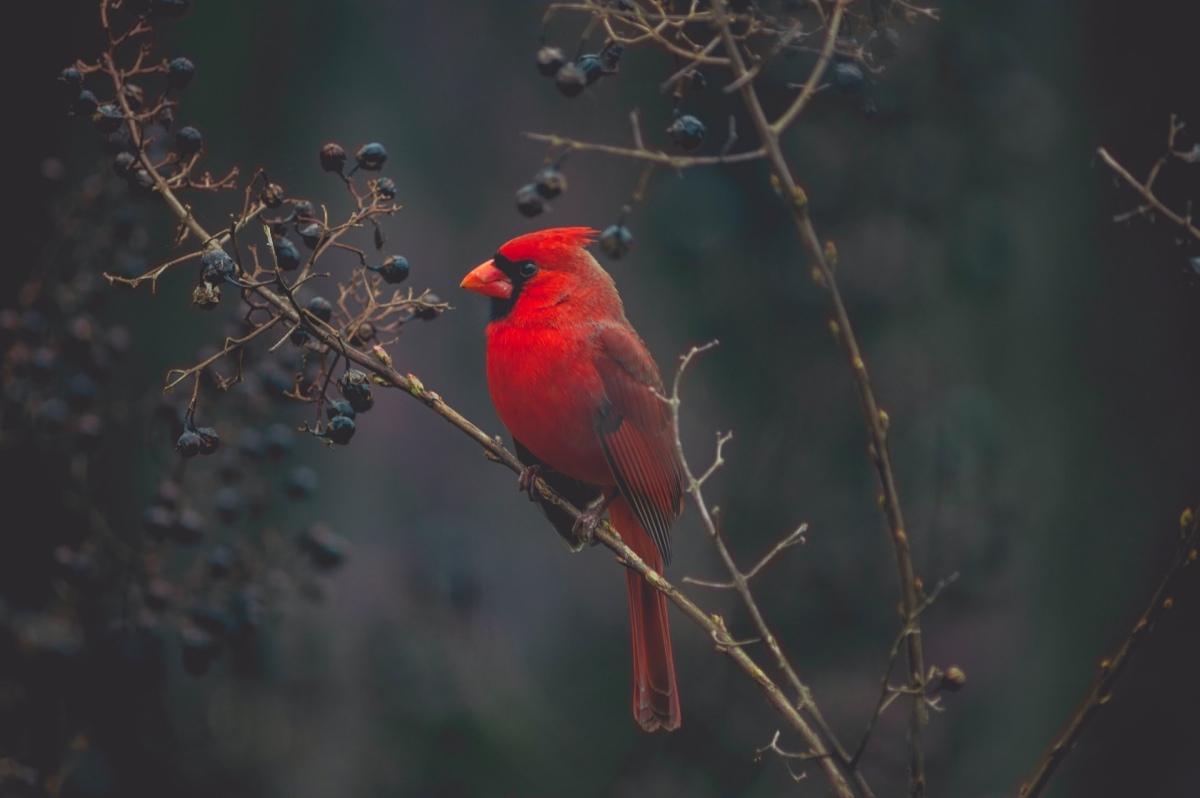
How Many Animals Native to Indiana?
What is the diversity of native animals in Indiana?
Let’s look at the total number of species of Chordata (mammals, birds, fishes, and reptiles).
Total number of animal species in Indiana: 5,838 (5,879 in total in North America)
What animals are found only in Indiana?
Believe it or not, there are lots of interesting animals in Indiana, as well as several rare ones, but none of them are entirely endemic to the state!
What comes closest to a unique Hoosier animal would be the Indiana bat, but it is actually widespread throughout the Midwest and the southern United States.
More About Animals in the World!
Loved these facts about the animals found in Indiana? Want to see what animals live in other countries?
Then check out these posts:
Or click here to see ALL the facts up on the blog! Spoiler alert: there’s A LOT of them.
Share the knowledge! Click on the buttons below to share information about these native animals of Indiana with your friends, and help them learn more about the world 🙂
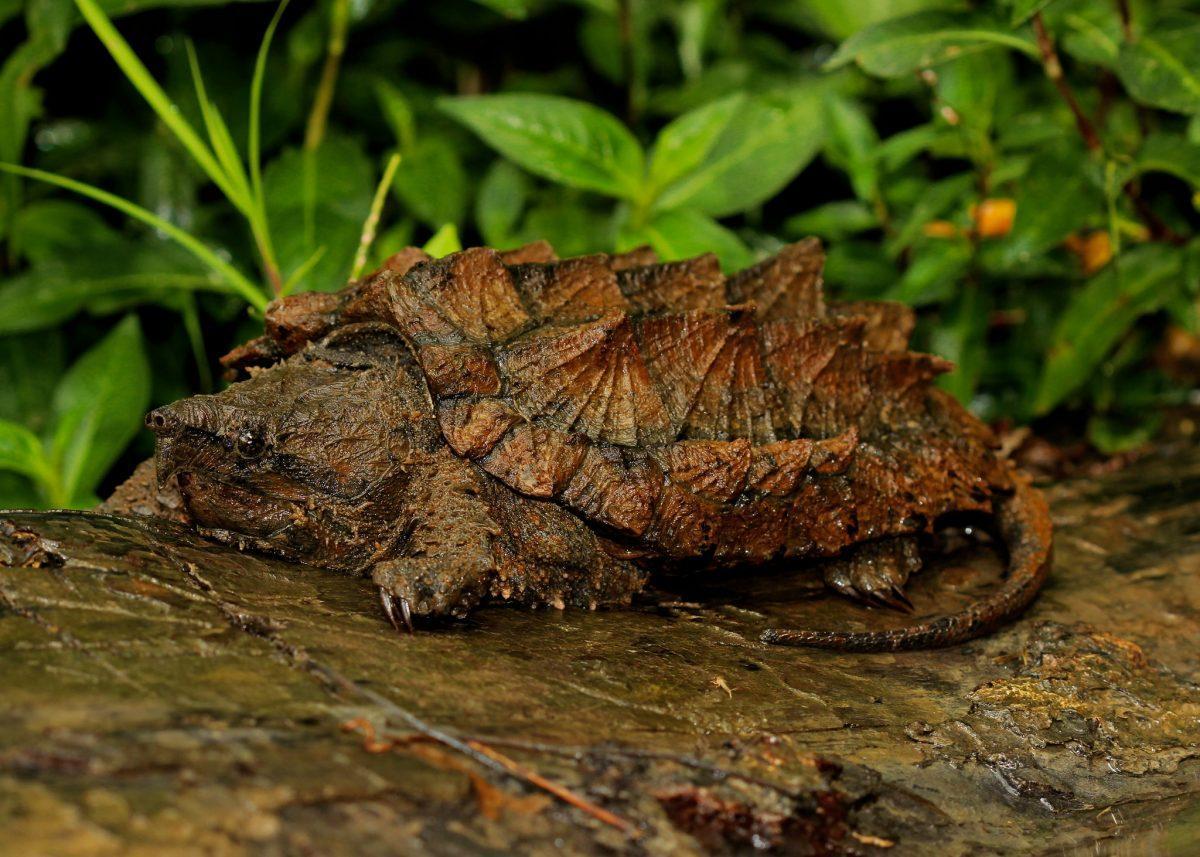
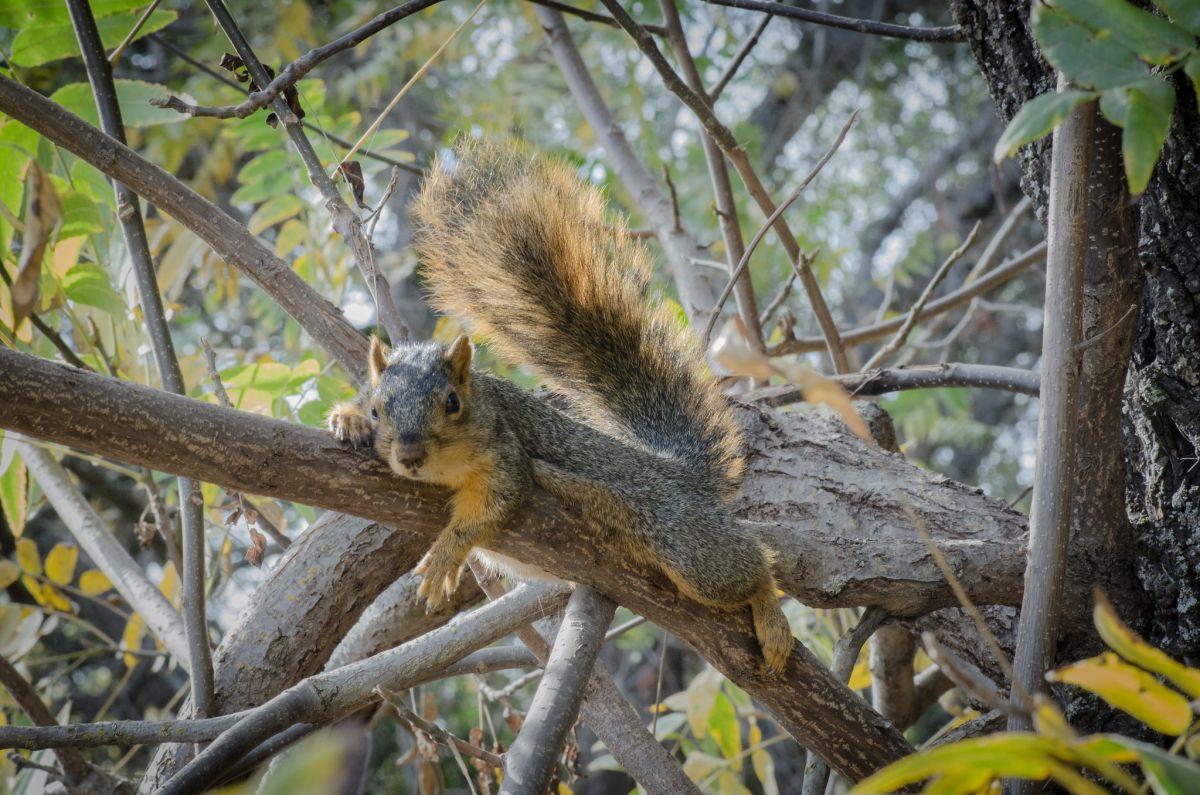
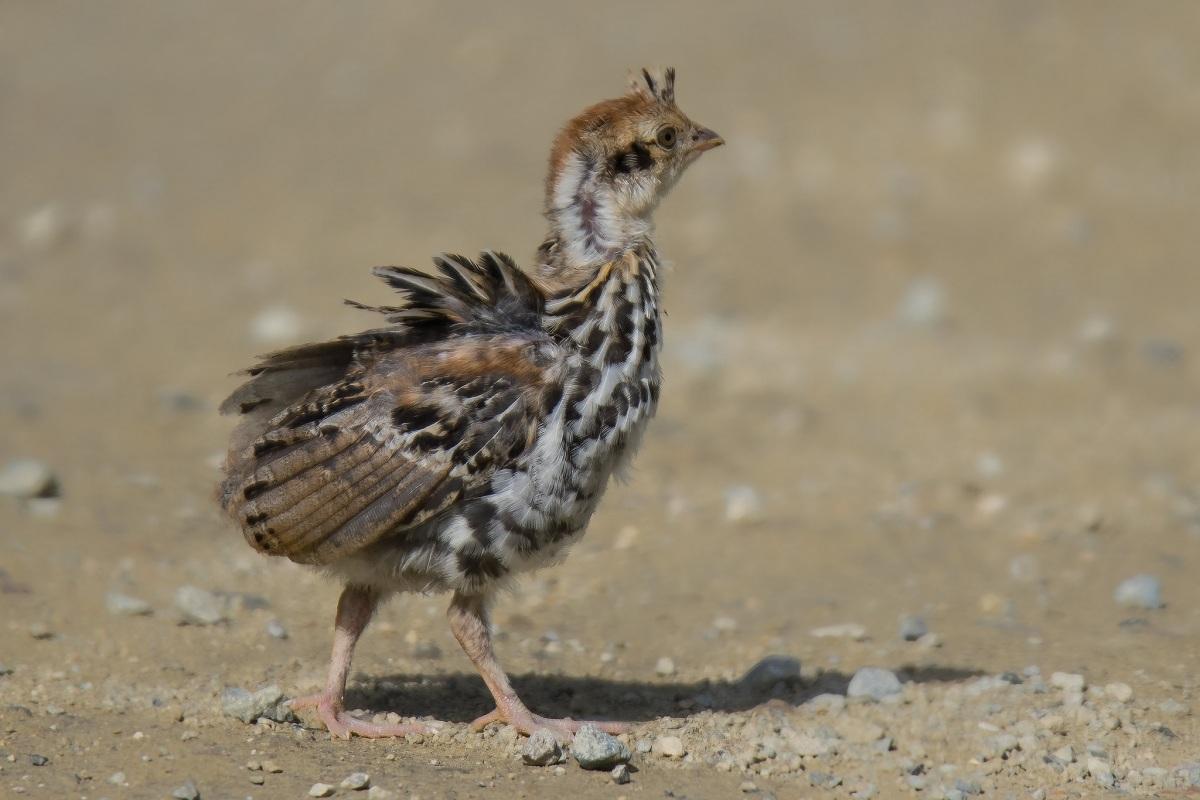
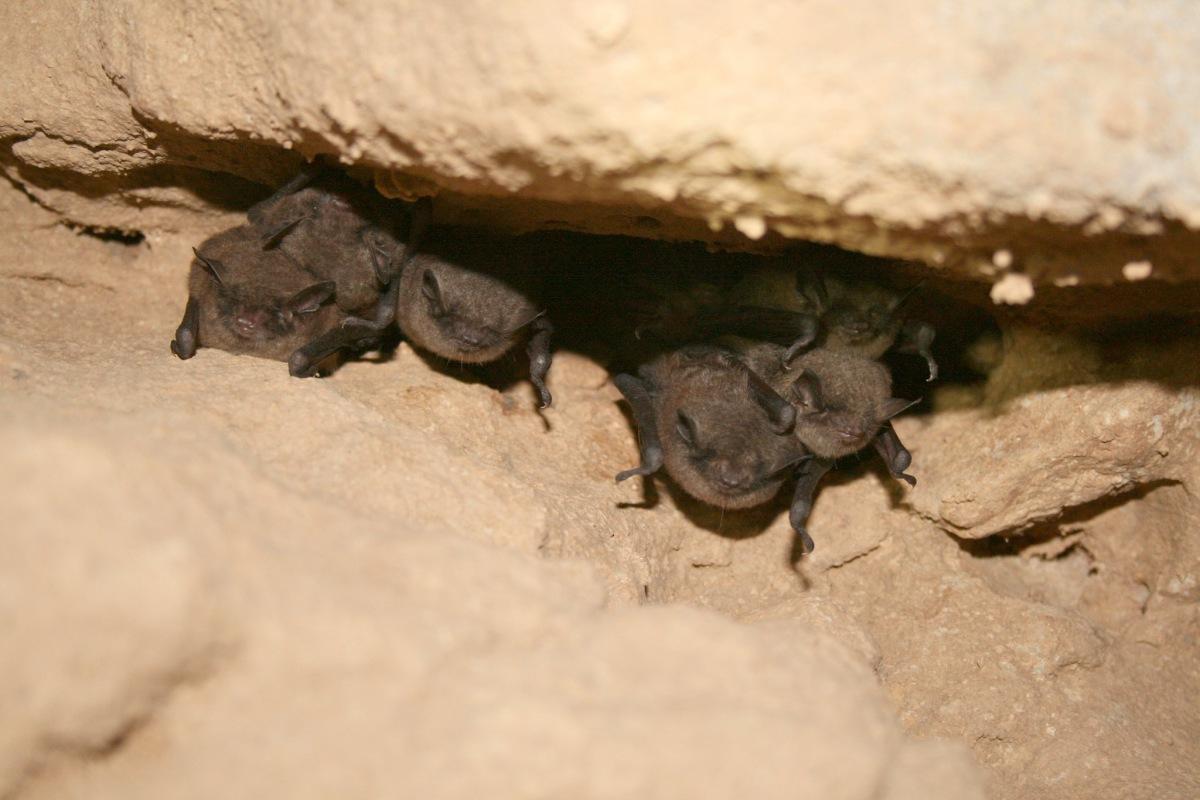
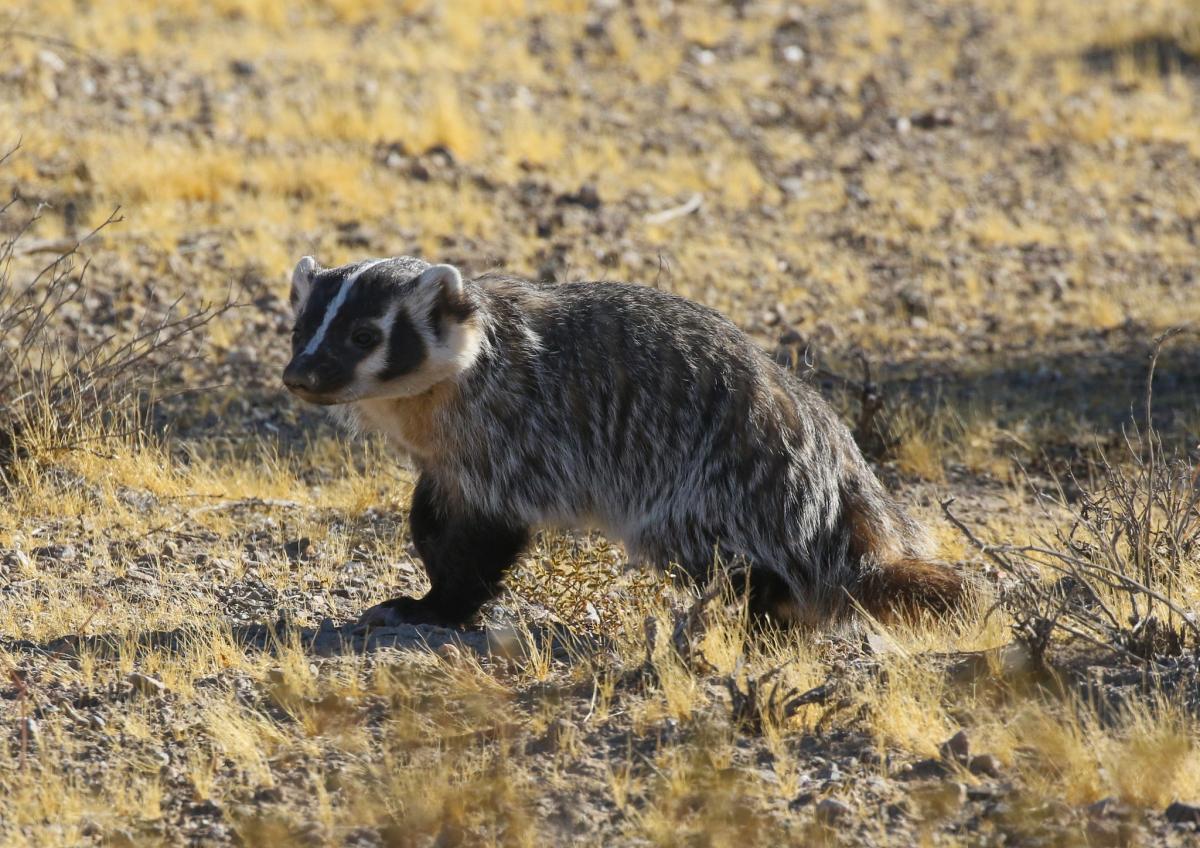

![18 Wild Animals in Bosnia [Wildlife in Bosnia]](https://www.kevmrc.com/wp-content/uploads/2022/06/18-wild-animals-in-bosnia.jpg)
![21 Wild Animals in Sri Lanka [Wildlife in Sri Lanka]](https://www.kevmrc.com/wp-content/uploads/2022/12/21-wild-animals-in-sri-lanka.jpg)
![21 Wild Animals in Western Australia [Wildlife in Western Australia]](https://www.kevmrc.com/wp-content/uploads/2023/01/21-wild-animals-in-western-australia.jpg)
I was lucky enough to see a black fox the other night as we were going to Walmart, it was 10:30 I know it was cause I was wanting to get to th store before they closed, and there in the parking lot it beautiful I know it was a fox because of the beautiful tail I know it was a fox because of the big thick tail with white at the end it was amazing in Goshen Indiana